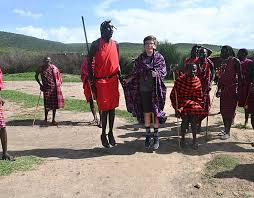
Envision a wildlife haven tucked away from the crowds, where breathtaking wildlife encounters await. Picture yourself embarking on off-road tracking, thrilling night safaris, and indulging in breakfasts amidst the untamed wilderness – experiences rarely found within national parks. Add to this the allure of exclusive accommodations, lodges, or tented camps, nestled near the wildlife, offering walking safaris led by the knowledgeable Maasai people, intimately connected to their ancestral land.

Doesn’t this embody the epitome of an authentic safari? Such an extraordinary experience exists within Kenya’s renowned conservancies, but how did these sanctuaries come into existence?
The Conservancy Dilemma
Kenya’s national parks have been a conservation triumph, protected from overgrazing and development, allowing them to flourish over the past three decades. However, the lands surrounding these parks presented a different narrative. Inhabited by indigenous tribes like the Maasai, these pastoral communities often allowed their cattle to overgraze, coupled with subsistence agriculture and charcoal production, leading to the degradation of the land and a decline in wildlife.
The Birth of a Solution
A solution emerged through a unique partnership between the tourism industry and the landowners – the Maasai people. These innovative agreements stipulated that the Maasai would curtail overgrazing and adopt eco-conscious agricultural practices, allowing the land to regenerate and wildlife to return.

Remarkably, within a few years, these once-depleted lands transformed, welcoming back an abundance of magnificent animals.
A Win-Win Collaboration
The benefits extended to the Maasai community. In exchange for their commitment to sustainable practices, they receive a yearly stipend, ensuring economic security. They continue their time-honored rotational grazing of cattle, but now with newfound stability, they can provide better healthcare and education for their families, ushering in positive, transformative changes for these traditional people.
Further Wins for Safari-Goers
For you, the avid safari enthusiast, these conservancies hold incredible allure. One crucial aspect of their charter is a profound dedication to the ecological well-being of the land and the local community. Unlike national parks, conservancies restrict the number of visitors, ensuring a serene and pristine environment.
Embarking on a conservancy safari promises a wealth of wildlife encounters, surpassing what other tourists may experience in more frequented areas. The conservancies allow exclusive activities like guided walking safaris, immersing you in the mesmerizing flora and fauna up close. Camping under the stars or relishing dinner in the bush becomes a reality, as do thrilling night safaris, enriching your safari adventure beyond imagination.


